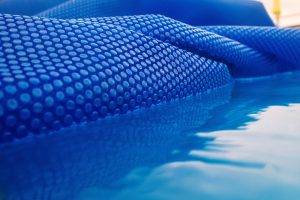- Oct 24, 2014
- 6
- Pool Size
- 38000
- Surface
- Plaster
- Chlorine
- Salt Water Generator
- SWG Type
- Hayward Aqua Rite (T-15)
Firstly I want to confess my ignorance with regard to the detail functioning of the generic SWG and the specific Hayward Aquarite systems.
I have an original Goldline Aquarite XL SWG paired with a Jandy Aqualink RS4 with an All button remote. I am currently running a Hayward W3T-Cell-15 that is 2 years old and was tested good by the local Leslies pool store. I confirmed the cell works by submerging it in a 5 gallon bucket of pool water and observing the bubbles being produced and smelling chlorine. By my understanding I should be producing chlorine but it is barely enough to measure. I am running the system at 90% and eight hours a day. Salt is 3000 ppm, water temp 82, voltage 24.3, amperage 4.87. PH is running on the low side at 7.4-7.6. As I recall when the pool was new and the systems worked well the PH always increased with chlorine generation and I had to add muriatic acid weekly. At the end of an eight hour run cycle the chlorine level reads ideal by the test strips and a Taylor chemical test kit. By morning the chlorine is all gone and I'm starting to get a little green algae. Leslie's tested the water with the following results: free chlorine=.63, total chlorine=.74, ph=7.5, alkalinity=105, calcium hardness=214, cyanuric acid=79, phosphates=54, salt=3000.
My first question is : Is my cell failing?
Next question: Can I tell anything from the voltage and amperage readings on the SWG control panel? ie. what does high or low voltage mean or high or low amperage? Is the range of voltage and amperage just a function of the cell and control system interaction?
Next question: How does the SWG system get feedback from the cell? ie. how does it calculate the salt level.
Feel free to educate me or to correct any misconceptions I have. I'm truly trying to understand this beyond simply turning it on and off.
Thanks in advance.
I have an original Goldline Aquarite XL SWG paired with a Jandy Aqualink RS4 with an All button remote. I am currently running a Hayward W3T-Cell-15 that is 2 years old and was tested good by the local Leslies pool store. I confirmed the cell works by submerging it in a 5 gallon bucket of pool water and observing the bubbles being produced and smelling chlorine. By my understanding I should be producing chlorine but it is barely enough to measure. I am running the system at 90% and eight hours a day. Salt is 3000 ppm, water temp 82, voltage 24.3, amperage 4.87. PH is running on the low side at 7.4-7.6. As I recall when the pool was new and the systems worked well the PH always increased with chlorine generation and I had to add muriatic acid weekly. At the end of an eight hour run cycle the chlorine level reads ideal by the test strips and a Taylor chemical test kit. By morning the chlorine is all gone and I'm starting to get a little green algae. Leslie's tested the water with the following results: free chlorine=.63, total chlorine=.74, ph=7.5, alkalinity=105, calcium hardness=214, cyanuric acid=79, phosphates=54, salt=3000.
My first question is : Is my cell failing?
Next question: Can I tell anything from the voltage and amperage readings on the SWG control panel? ie. what does high or low voltage mean or high or low amperage? Is the range of voltage and amperage just a function of the cell and control system interaction?
Next question: How does the SWG system get feedback from the cell? ie. how does it calculate the salt level.
Feel free to educate me or to correct any misconceptions I have. I'm truly trying to understand this beyond simply turning it on and off.
Thanks in advance.


